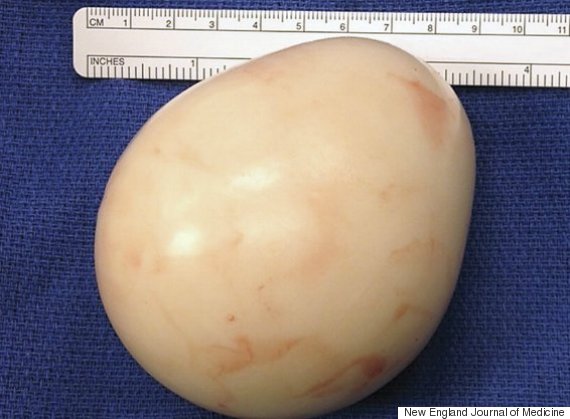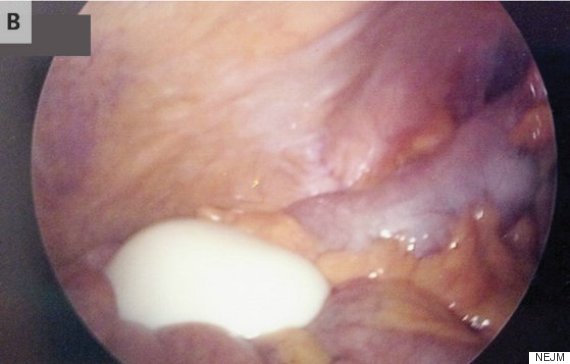What doctors at Washington, D.C. hospitals discovered inside a 62-year-old patient looks like a giant egg, and parts of it had a "firm and rubbery" texture similar to a hard-boiled egg. But this was no egg.
It's called a peritoneal loose body, and according to one of the doctors that had it surgically removed, this is the largest specimen of its kind reported in medical literature to date.
"The mass was likely made of a small piece of fat that fell away from its attachments when the patient was very young. Over time the fat calcified and continued to grow," urologist Dr. Rachael Sussman told The Huffington Post in an email. "Like a pearl inside an oyster."

The benign fibrous mass was removed in October 2013. Sussman, of Georgetown University Hospital, and Dr. Jonah Murdock of Washington DC Veterans Affairs Medical Center published an article about the mass in the New England Journal of Medicine on Thursday.
Peritoneal loose bodies develop inside the abdominal cavity. While they're not uncommon, they're usually much smaller than this.
"There have been studies on these bodies in the past and serial imaging shows they move depending on patient position," Sussman wrote. "In fact due to this feature they are sometimes referred to as 'peritoneal mice.'"
When the masses get to be this big, they can cause increased or decreased urinary frequency, or obstruct the bowel, so they need to be surgically removed.

In this case, because of gravity, the mass sat on top of the patient's bladder in his pelvis, Sussman said. This led to increased urinary frequency, which he reported over a course of 20 years. After it was removed, frequency turned to normal.

The mass measured about 3.34 inches at its midline, and weighed about half a pound. When doctors cut it open, they found a calcified bit of fat at the center. The green dye you see was added later to show the sections more clearly. The yellowish part at the center is the section of mass that calcified.
Sussman said the mass was odorless when they cut it open.
 Like Us On Facebook |
Like Us On Facebook |
 Follow Us On Twitter |
Follow Us On Twitter |
![]() Contact The Author
Contact The Author

